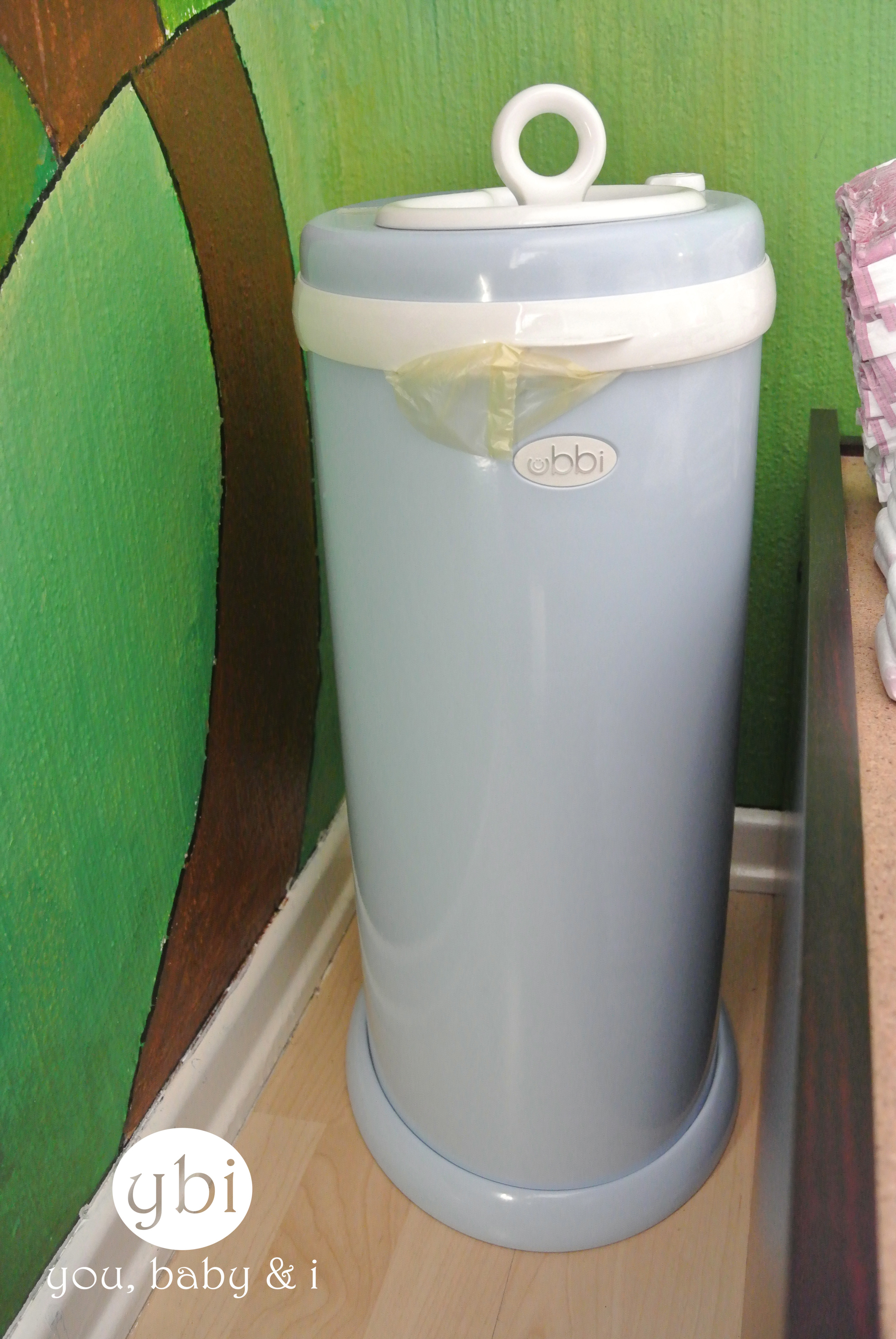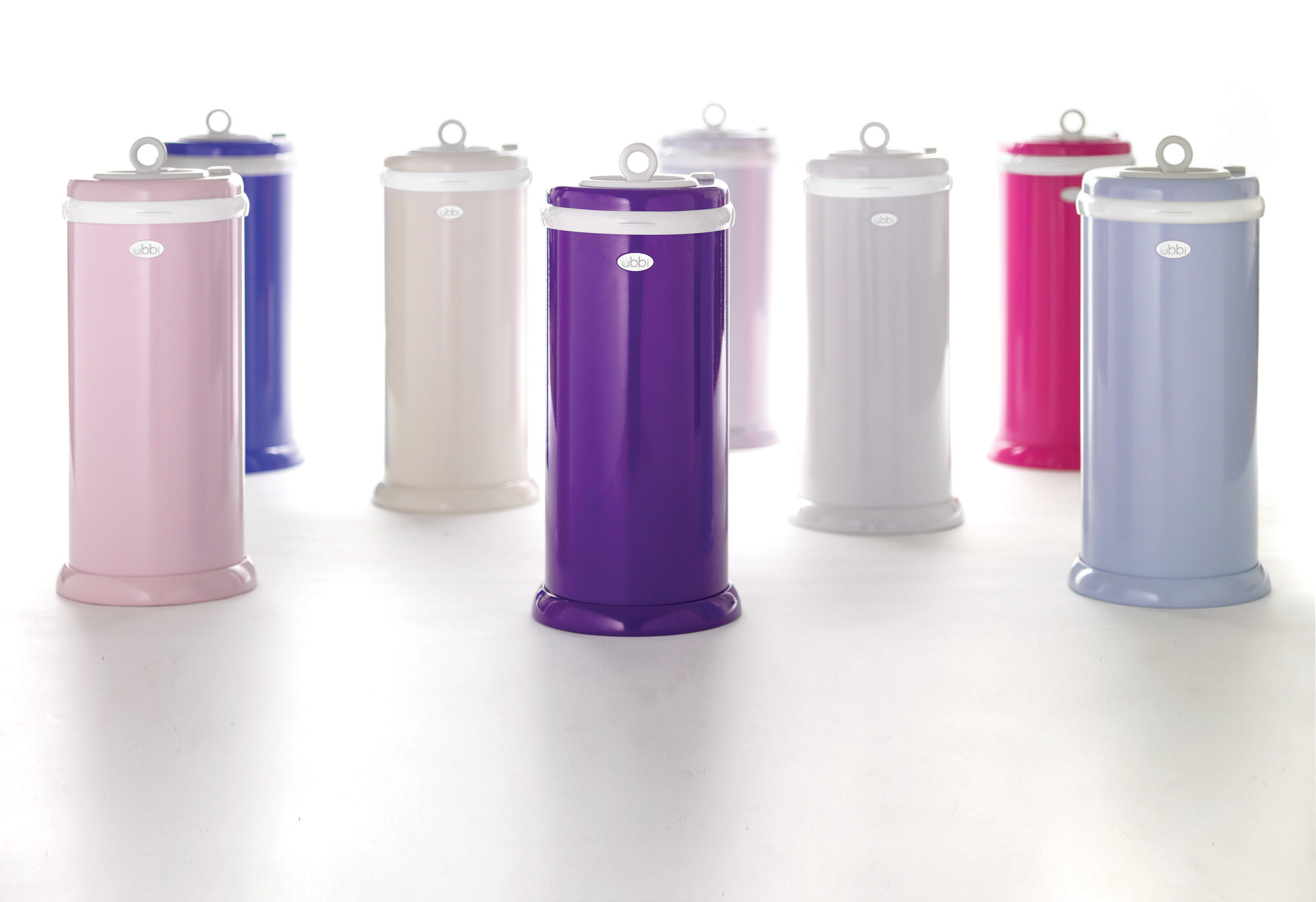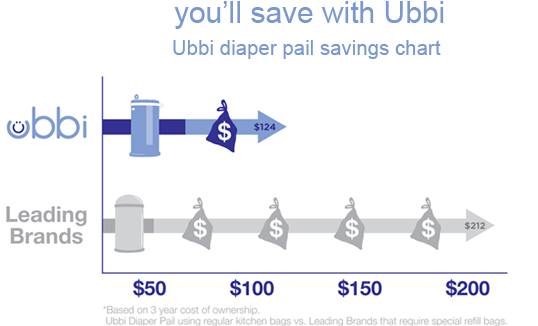If you’ve read some of my previous posts, you might of realised I’m obsessed with Ubbi diaper bin. I jumped with joy when I heard it was arriving in South Africa. I literally hunted down the distributor 😉 haha ..who by the way is a very nice person, he understood my frustration as he is a parent. I’ve followed the brand overseas for sometime, I knew this is the bin I wanted for my daughters stinky diapers..
Lets go back in time…
When I was purchasing essentials during my pregnancy, I knew I wanted a diaper bin. I know many moms think it’s a waste of money but for me its a must have in the nursery. The odor of a dirty diaper can torment you in your sleep and your room during the night. I researched and found the best bin here in SA. It worked for us however as months went by… I realised it actually wasn’t the best for me.
1. Firstly I was paying close to R100/R120 a month on refills.
2. The plastic bin started smelling.
3. The bin pedal started disengaging quite often which became annoying every time we emptied the bin.
The only plus was it could take a lot of nappies.
If you do the math and calculate how much it would cost me a year on refills only?! Close to R1200.
To me that was becoming too much, I was hoping I would find a brand that could cater for my needs…. and then UBBI arrived.
What makes Ubbi different?
1. Ubbi is the only steel diaper bin out on the market now.
2. Safe – childproof safety lock prevents children from getting into the pail.
3. Comes in various colours.
4. Convenient & economical – fits standard kitchen bags providing savings over pails that use expensive, hard-to-find refills.
5. Its eco-friendly.
6. Innovative sliding lid -minimizes air disruption to prevent odors from escaping.
7. Rubber seals – prevent leaks and keep odors locked in.
8. Simple – easy to load, use, empty and clean.
I received my bin a few months back and decided to put it to the test, to see if all the hype about this brand is actually true.
Kitana has become curious George and tries to stick her tiny fingers wherever she can. She attempted to open the bin many times to ‘throw’ my unused cotton balls and failed, thanks to the child lock option. Ive been using my plastic bags from shopping, this has saved me over R500 already. The bin fits perfectly in the corner of her room, looks attractive and doesn’t stink up like many other bins.
This bin will save you long term and trust me, you wont regret it 🙂 ..
Read about my Top 15 products first time moms should have: https://youbabyandi.com/15-products-first-time-moms-should-have/




36 comments
How awesome is this bin Stainless steel, pretty and I dont pay an arm and a leg for the bag refills Love them!
Would you please share the details of the distributor in SA?
Hi Christine, the bin is available at Kids emporium nationwide and Koco Bino in Sandton City.
We are also available at Kids Living in Green Point, Cape Town
Hi Shan!
In one of the above photos, I noticed that the bag was loaded around the pail and not around the bag holder on the inside. This will actually hinder the Ubbi’s ability to contain the smell. The Ubbi is an airtight pail and the rubber seals are what keep the smell inside. If the bag is loaded around the pail itself, the rubber seals will not be able to shut properly. Load the bag around the inner ring for pail optimization. If you have any other questions or concerns, please email [email protected]
Thank you so much, my helper normally fills it. I will let her know. Such great service from you guys!
Scrap Copper refining methods Copper scrap environmental certifications Copper scrap identification
Copper scrap recycling certifications Copper scrap marketing Scrap copper buyer
Copper scrap sorting technologies Copper wire scrap suppliers Copper recycling regulations
Scrap aluminium recycling economics Aluminium scrap reusability Sustainable aluminium recycling practices
Metal repurposing facility Ferrous material exports Iron scrap reprocessing facility
Ferrous metal recycling sustainability, Iron scrap remolding, Scrap metal reclamation
Aluminium salvage assessment Scrap aluminium resale Aluminium smelting byproduct recycling
Metal disposal Ferrous material recycling process improvements Iron scrap export procedures
Ferrous metal auditing, Iron scrap reclamation operations, Scrap metal reclaiming solutions
Metal scrap recovery and reuse Aluminium scrap material grading Scrap aluminium storage solutions
Scrap metal reclamation depots, Buying aluminum cable scrap, Scrap metal reclamation and recovery yard
Scrap metal documentation Scrap aluminium carbon footprint Scrap aluminum exporters/importers
Industrial scrap metal buyers, Aluminum cable scrap industry, Metal recycling and reprocessing
Metal waste recycling technology Aluminum recycling industry trends Aluminium scrap landfill diversion
Metal scrap collection services, Aluminum cable recycling guidelines, Scrap metal auctions
Industrial metal recovery Ferrous material yard management Iron reprocessor
Ferrous material entrepreneurship, Iron scrap logistics services, Scrap metal reclamation and repurposing facility
Scrap metal volume assessment Efficient aluminum scrap management Aluminum scrap treatment
Scrap metal reclamation and repurposing, Scrap aluminum cables, Scrap metal recycler
Metal waste recovery center Ferrous material recycling auditing Iron recovery and reclaiming yard
Ferrous material process optimization, Iron and steel recovery and recycling, Metal scrap reclamation
Metal waste recycling solutions Aluminium scrap primary processing Aluminum recycling network
Scrap metal reclamation yard, Environmentally friendly aluminum cable recycling, Scrap metal innovation
Scrap metal salvage depot Ferrous material recycling equipment Iron scrapyard services
Ferrous waste safety standards, Iron scrap logistics services, Metal disposal facility
Metal scraps reclamation facility Scrap aluminum recovery methods Recycling regulations for aluminum scrap
Metal reutilization center, Aluminum cable waste management, Scrap metal ecological impact
Metal recoveryservices Aluminum scrap market analysis Aluminium recycling plant
Scrap metal reusability, Aluminum cable recycling process, Scrap metal testing
Scrap metal reclamation and reutilization Ferrous material recycling negotiations Iron waste reclaiming center
Ferrous metal recovery operations, Iron recycling plant, Metal scrap supplier relationships
Metal compaction services Aluminium waste recycling Aluminium recycling incentives
Scrap metal testing, Environmental benefits of recycling aluminum cable scrap, Scrap metal reclamation and utilization services
Metal recovery and reprocessing Ferrous material promotion Iron scrap reuse
Ferrous material facility maintenance, Iron waste refurbishing and reusing, Metal reclamation plant
Copper scrap weight measurement Copper scrap yard Copper alloy reusing
Metal scrap reuse, Copper scrap recycling technology, Metal waste market analysis
Copper scrap branding Copper has been used for thousands of years by ancient civilizations. It is believed that copper was discovered around the same time as gold and silver in the Middle East, around 6000 BC. Copper was a valuable material due to its versatility and suitability for tools and weapons. Between 5000-3000 BC, the people of the Balkan Peninsula began to use copper to make ornaments and jewelry. The ancient Egyptians are also known for their use of copper. They used copper to make tools, weapons, and even pipes for their plumbing systems. In ancient Mesopotamia, copper was used to make weapons and tools as well. The Sumerians developed a way to extract copper from its ore using charcoal and raised the standard of metallurgy. The Babylonians were also skilled at working with copper and used it for mirrors, jewelry, and weapons. The Minoans, who lived on the island of Crete around 3000-1000 BC, are also known for their use of copper. They used it to make tools, weapons, and decorative objects. The use of copper was an important factor in the development of their civilization, as copper was used to create trade networks and facilitated the rise of the Minoan culture. The ancient Greeks also made extensive use of copper. They were skilled at crafting copper vessels and used copper to make armor and weapons. Copper mines were established in the Aegean islands around 3500 BC, and this provided a valuable resource for the Greeks. In South America, the Incas were also known for their extensive use of copper. They used it for weapons, jewelry, and decorative objects. The Incas also developed techniques for smelting copper, and this played an important role in their economy. In conclusion, copper has been an important material for thousands of years and has played a significant role in the development of ancient civilizations. Its versatility and suitability for tools, weapons, and decorative objects made it a valuable commodity. Today, copper remains an important metal and is used in a wide range of industries Metal recyclability Copper flat wire recycling Copper scrap extraction Recycled copper products Copper scrap containers Metal commodity trading
Scrap metal trading Ferrous material recycling baling Iron recycling operations
Ferrous material recycling seminars, Iron and steel scrapping and regeneration, Sustainable scrap metal handling
Copper scrap export market Copper is one of the oldest metals known to man. Its discovery dates back to prehistoric times, and it is believed to have been first used for ornaments and tools around 8000 BCE. Copper became more widely used during the Bronze Age, around 4000 BCE, when it was alloyed with tin to create bronze, a superior metal for weapons and tools. Copper was also used extensively in ancient Egypt, Greece, and Rome for coins, jewelry, and decorative items. The Romans were the first to develop copper mining on an industrial scale, and they used copper extensively for plumbing and other applications. In the Middle Ages, copper was used for roofing and other building applications, as well as for making bells and musical instruments. During the Renaissance, copper became more widely used in art, particularly for engraving and etching. In the 18th and 19th centuries, copper became a major industrial metal, particularly in the UK and the United States. It was used for steam engines, electrical wiring, telegraph cables, and other applications. Copper alloys, such as brass and bronze, also became popular during this period. Today, copper remains an important industrial metal, particularly for electrical applications. It is used in wiring, motors, transformers, and other electrical components due to its excellent conductivity. Copper alloys are also widely used, particularly brass and bronze, which are valued for their corrosion resistance and decorative properties. Overall, copper and copper alloys have played a significant role in human history and continue to be important metals in modern industry. Their durability, conductivity, and aesthetic qualities have made them a valuable resource for millennia Scrap metal procurement Recycled copper raw materials Copper scrap management Copper scrap equipment Copper scrap recycling statistics Scrap metal regeneration center
Metal reprocessing depots Metal recycling industry regulations Iron scrap processing
Ferrous metal repackaging, Scrap iron handling, Metal recycling certification
Recycled copper products Copper scrap product innovation Scrap metal market competition
Recycling Copper cables, Scrap metal reclamation operations, Copper scrap disposal solutions
Metal recycling logistics, Copper scrap life cycle assessment, Copper cable scrap recovery rates, Scrap metal transportation logistics
Scrap metal recovery plant Ferrous material scrap valuation Iron scrap transport
Ferrous metal industry outlook, Scrap iron reclaiming center, Metal reclamation and regeneration
Scrap metal marketing strategies Ferrous material enterprise Iron scrap dismantling
Ferrous material valorization, Iron recycling industry, Metal reclaiming
Scrap metal compacting Ferrous scrap material testing Iron waste reclamation solutions
Ferrous waste salvaging, Iron reclaiming yard collection, Scrap metal reuse services
Environmental compliance in metal recycling Ferrous material processing technologies Iron scrap smelting
Ferrous scrap processing laws, Scrap iron reclamation center, Metal waste repurposing center